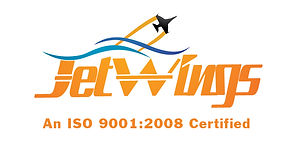
CFD DEPARTMENT
JETWINGS TECHNOLOGIES


Flow Investigation in Bell Nozzle
Introduction:
The Bell-shaped or Contour nozzle is probably the most commonly used shaped rocket engine nozzle. It has a high angle expansion section (20 to 50 degrees) right behind the nozzle throat; this is followed by a gradual reversal of nozzle contour slope so that the nozzle exit the divergence angle is small, usually less than a 10 degree half angle. Ideally a nozzle is wished to direct all of the gases generated in the combustion chamber and accelerated by the throat to leave the nozzle traveling straight out the nozzle. That means the momentum of the gases are axial, imparting the maximum thrust to the rocket. In fact, there are some non-axial components to the momentum. In terms of a momentum vector, there is an angle between the axis of the rocket engine and the flow of the gas. As a result, the thrust is lowered by varying amounts. The Bell or Contour shape is designed to impart a large angle expansion for the gases right after the throat. The nozzle is then curved back in to give a nearly straight flow of gas out the nozzle opening. The contour used is rather complex. The large expansion section near the throat causes expansion shock waves. The reversal of the slope to bring the exit to near zero degrees causes compression shock waves. A properly designed nozzle will have these two sets of shock waves coincide and cancel each other out. In this way, the bell is a compromise between the two extremes of the conical nozzle since it minimizes weight while maximizing performance.
Geometry and Mesh:
Fig 1: Structures mesh in Symmetric
Analysis:
Fig 2: Mach number Contour
The Mach number is found to increase as move from inlet to exit. The Mach number at the inlet is below Mach 1 (subsonic). At the throat section the Mach varies from 0.5 Mach to 0.7 Mach. The Mach at the exit is found to be 4 Mach (super-sonic). The same way pressure and Temperature contours also found and graph are validated.
Result:
The analysis had been done for different altitude conditions and finally concluded that the performance of Nozzle increases with increasing altitude.



